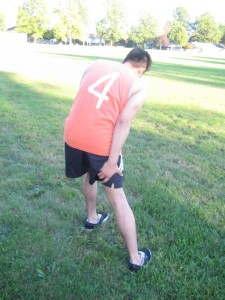There are several conditions that can lead to lateral hamstring tendinopathy. It is important to note that tendinopathy refers to an injury to a tendon. The tendons are comprised of fibrous material and responsible for connecting muscle to bone as well as facilitating the movement of the joints. Take note that there are two main types of tendinopathy – tendinitis (inflammation of a tendon) and tendinosis (tissue degeneration). The lateral hamstring has always been the usual location for tendinopathy to occur.
http://youtu.be/nGUWuv9EG6Y
The hamstring muscle group is situated on the posterior region or back of the upper leg. The hamstring muscle group is comprised of three muscles – semitendinosis, biceps femoris and semimembranosus.
What are the causes of lateral hamstring tendinopathy?

Always remember that lateral hamstring tendinopathy is a common sports-related injury particularly among runners. The common cause of this condition is overuse linked with the muscle-tendon unit. The overuse and intense strain on the biceps femoris tendon can lead to micro tears that develop and accumulate over time, resulting to pain and degeneration of the tendon.
Even though participation in sports has been one of the common causes of overuse injuries, engaging in physical labor and certain types of activities can also lead to lateral hamstring tendinopathy.
Symptoms of lateral hamstring tendinopathy
The symptoms connected with lateral hamstring tendinopathy usually depend on the reason and harshness of the condition. The common indications related with tendinopathy of the biceps femoris tendon typically include pain once the knee is bent against resistance, swelling and tenderness on the location where the biceps femoris sets into the fibula and even stiffness in the affected area after exercise. An individual with lateral hamstring tendinopathy will also experience diminished knee joint movement.
What are the risk factors?
There are certain risks that can increase the likelihood of developing the condition. The common risk factors include being overweight or obese, imbalances with the lower extremity muscles, advanced age, diminished flexibility of the lower body and abnormalities with the leg alignment. Females face a higher risk for lateral hamstring tendinopathy. Additionally, engaging in sports that entails a lot of running also poses as a risk for developing the condition.
Treatment for lateral hamstring tendinopathy
Most cases of the condition typically respond well with the conservative modes of treatment. The treatment options include rest, application of ice, modification of activity level and gentle stretching exercises. An individual with lateral hamstring tendinopathy must consult a doctor specializing on sports so that the appropriate treatment and rehabilitation can be provided. If you will take a course on first aid training, you can learn how to effectively use ice on similar conditions.
There are certain manual medicinal therapies such as massage therapy and trigger point therapy that can provide relief to the condition. Even kinesio taping methods and cold laser therapy has been proven to be beneficial
